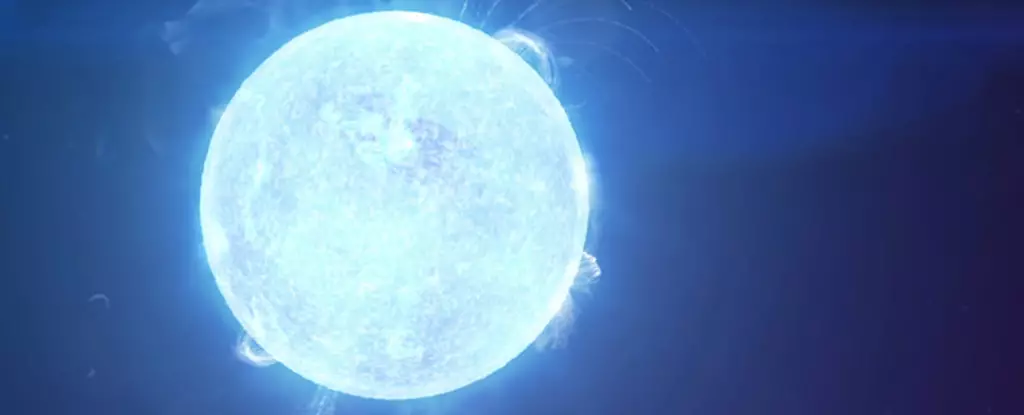Neutron stars, the remnants of massive stars, have always fascinated scientists with their bizarre and extreme nature. These incredibly dense objects are believed to be supported by the quantum pressure of neutrons. However, recent studies suggest that some neutron stars might have an even more peculiar feature – a core made of quarks. This revelation emerged from an analysis that utilized Bayesian statistics and observational data on the mass and size of neutron stars. The findings indicate a high probability that massive neutron stars possess quark cores. While the research is still in its early stages and based on limited data, it opens up exciting possibilities for a deeper understanding of these enigmatic celestial bodies.
When a massive star exhausts its nuclear fuel, a neutron star is created as the result of a core collapse. Neutron stars are exceptionally dense, with masses comparable to that of our Sun but compressed into a sphere with a diameter of only a few kilometers. These astronomical wonders possess an incredibly strong gravitational force, capable of distorting spacetime around them. Furthermore, the pressure within their cores prevents them from collapsing into black holes.
To comprehend the concept of a quark core within a neutron star, it is essential to understand the fundamental particles that comprise atoms. Atoms consist of three types of particles: protons, neutrons, and electrons. Electrons are elementary particles, whereas protons and neutrons are composite particles made up of up and down quarks. Specifically, protons possess two up quarks and one down quark, while neutrons contain two down quarks and one up quark. Normally, these quarks are always bound together within protons and neutrons, making them inseparable.
In the realm of empty space, known as the vacuum, protons and neutrons cannot exist as free particles because the strong force that binds their quarks is too powerful. However, recent research conducted and published in Nature Communications has unveiled a fascinating possibility – quarks may be able to liberate themselves within the cores of neutron stars. This theory challenges the long-held belief that in the core of a neutron star, quarks remain tightly bound within the tightly packed neutrons, unable to break free.
Since conducting experiments on neutron stars or recreating their conditions on Earth is currently beyond our reach, scientists rely on meticulous analysis and theoretical models to gain insights into the mysterious nature of these celestial objects. The researchers in this new study took a unique approach by utilizing Bayesian statistics and observational data on the mass and size of neutron stars. By examining patterns of observation and applying Bayesian analysis, they aimed to extrapolate likely scenarios regarding the presence of quark cores in neutron stars.
Unveiling the Probabilities
The team discovered that neutron stars with masses exceeding that of two Suns have an 80 to 90 percent likelihood of possessing quark cores. This finding suggests that massive neutron stars might feature a dense quark core, transforming them into a unique kind of celestial object. This revelation is fascinating as it indicates that the gap between quark stars and regular neutron stars is not a matter of existence but rather a question of where the transition occurs.
It is essential to acknowledge the limitations of this analysis due to the relatively small data sample available. Currently, we lack precise measurements of both the mass and radius of most neutron stars, preventing a comprehensive understanding of their nature. However, as our technological capabilities advance and more data becomes accessible, we can anticipate a clearer distinction between quark matter and dense neutron matter.
Although our understanding of neutron stars remains incomplete, recent research has shed light on a fascinating possibility – the existence of quark cores within certain neutron stars. This finding challenges our traditional notions and acts as a catalyst for further exploration and investigation. While more data is required to definitively determine the presence and distribution of quark cores, the current study paves the way for new discoveries that will undoubtedly deepen our understanding of these mysterious celestial bodies. Neutron stars, with their intriguing composition and extraordinary gravitational forces, continue to captivate scientists and invite further exploration into the enigmatic nature of our universe.


Leave a Reply